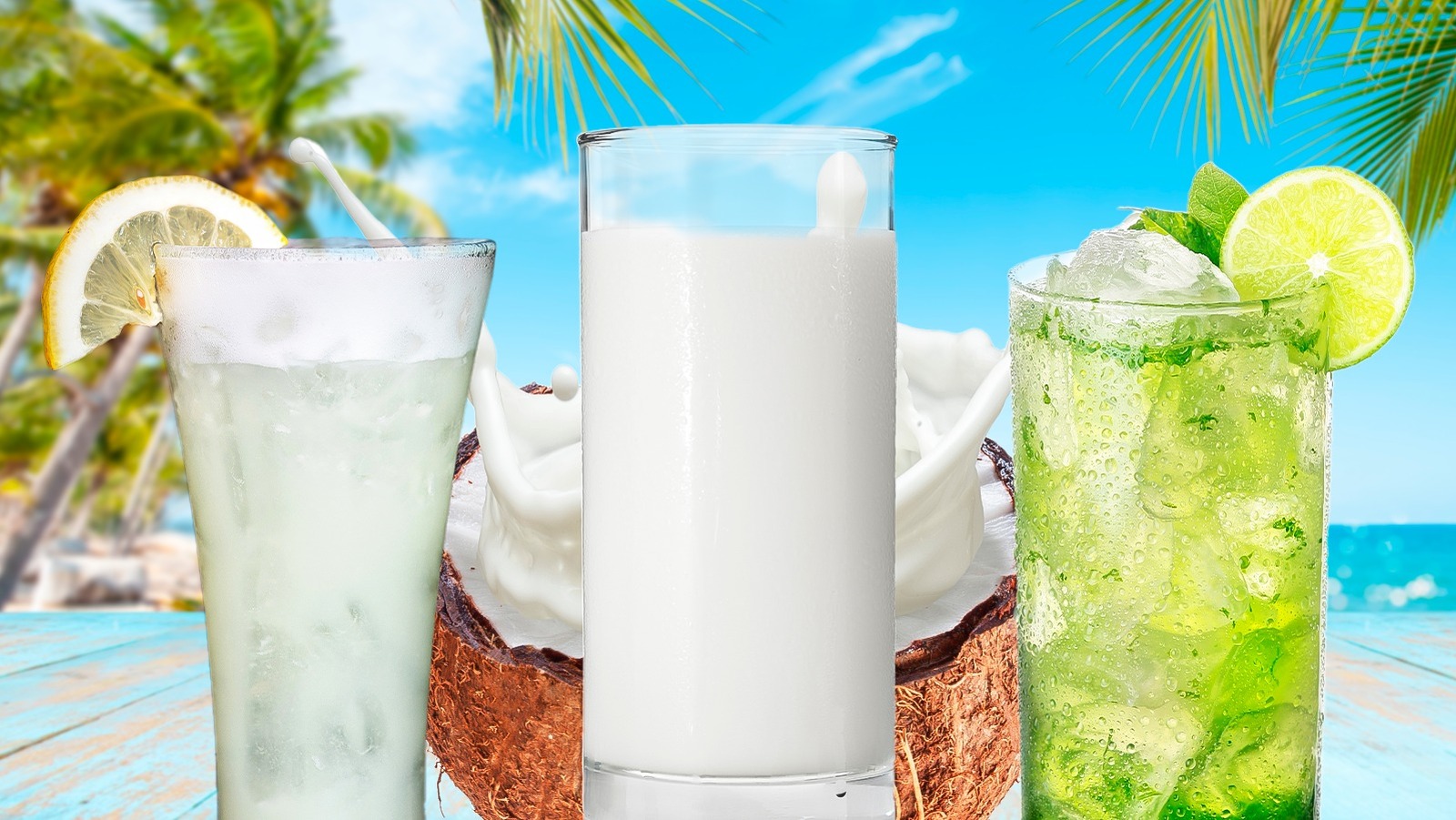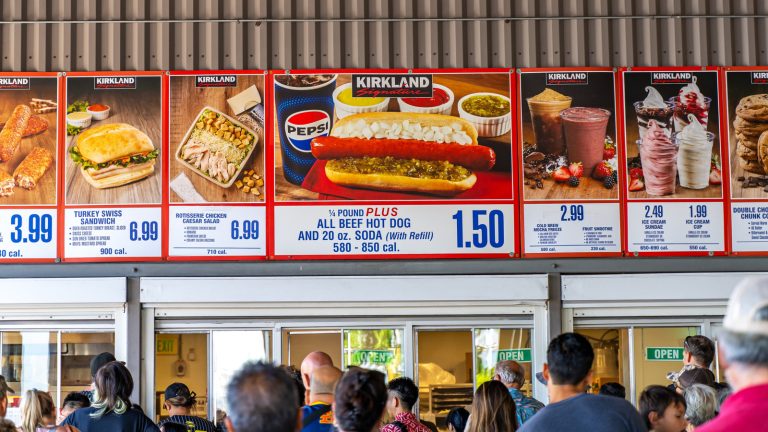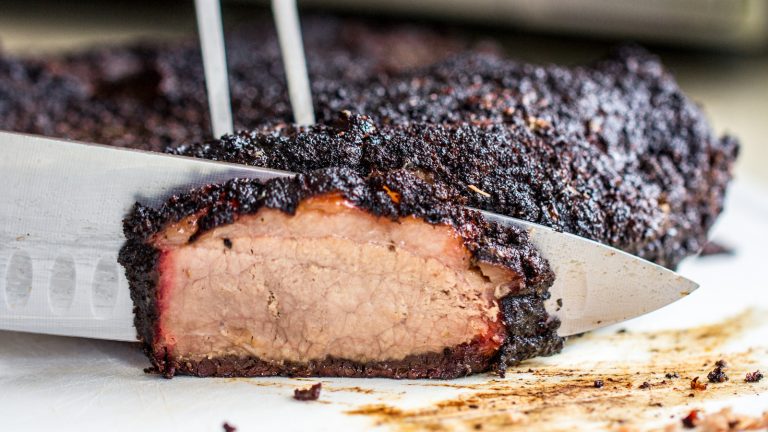When it comes to mixing with coconut milk, most people think of curries before cocktails. While Caribbean mainstays like the Piña Colada and Coquito scream coconut loud and proud, many bartenders would shudder at the thought of adding coconut milk to tried and true classics. However, with a slew of nutritional benefits attached to coconut milk’s name, which include weight loss and cardiovascular health, the dairy-free tropical elixir is an excellent source of fiber, calcium, iron, and zinc, and a perfect way to upgrade traditional recipes to fit the fun-loving, heart-healthy tastebuds of the 21st century.
Coconut milk makes for a complementary additive to spirit-forward classics because of its thick texture and sweet, slightly nutty flavor. It’s a perfect ingredient for adding extra body to sours, fizzes, and collins’ due to its creamy mouthfeel and complex fruit flavor. Better still, swap out the heavy cream for coconut milk in your classic dessert cocktails, and you’re instantly enjoying a lighter and more refined classic that’s dairy-free to boot.
From adding depth to soups and stews to crafting delicious dairy-free drinks, there’s a bunch of benefits to having coconut milk in your pantry. As a bartender with two decades of industry experience, I’ve learned firsthand how the small but mighty can of coconut milk is able to elevate the simplest of drinks, creating luscious textures and extravagant flavors teeming with exotic tropicality.
Margarita
The classic that’s perfect for all seasons, the margarita is renowned for its tasty versatility. Traditionally served up with a salt rim and lime wheel garnish, margaritas’ smoky-sweet flavor profile is often enhanced with additional elements like fruit juices and purees, herb infusions, syrups, and hand-muddled farm-fresh produce. For a sweeter rendition that yields an uncharacteristically creamy mouthfeel, coconut milk is the perfect additive to your next margarita.
A base of tequila and lime juice, the margarita is an endlessly customizable cocktail that can be modified to accommodate all palates, preferences, and seasons. Often complemented by fruits like strawberry, watermelon, and pineapple for a fruit-forward refresher, they can also be made spicy by muddling nightshades like jalapeño peppers and, hotter still, habañeros. If your preference is for amplified aromatics, sweet basil, either incorporated into a sugar syrup or muddled fresh, makes for a deliciously botanical take on the classic cocktail.
When upgrading with coconut milk, be sure to use a full-fat coconut milk from the can for a natural, full-fledged coconut flavor. Shaken with freshly squeezed lime juice, the combination of tart acid and creamy sweetness lends the classic cocktail with a rich upgrade, in both taste and texture.
A simple, four-ingredient recipe, I go straight for tequila blanco. But if your preference leans smoky, opt for a tequila reposado for more of that barrel-aged flavor, or older still, tequila añejo. Conversely, if sweet is your style, incorporate agave syrup to your heart’s content — just remember that coconut milk adds sweetness and thickness, so add sparingly and taste as you go.
Mojito
When posted up on the patio for cocktail hour or simply relaxing poolside, the preferred classic cocktail is the mojito. Light, bright, and intensely satisfying, the summertime staple is an undeniable classic for bartenders and imbibers alike. Classified in the Collins family of cocktails, the mojito is served over ice and consists of rum, lime, mint, sugar, and soda. The addition of coconut milk yields a frothy, creamier version of the spritzy cocktail and helps to mask the mojito’s boozy overtones. Typically stirred, the extra ingredient requires vigorous shaking. This extra step ensures that the milk is fully emulsified into the rest of the drink’s ingredients.
Milder in flavor than aged rums with deeper color, light, or white, rum is the base of this classic cocktail. Nearly all of the rum in the world comes from the Caribbean and Latin America, and while they vary greatly in style, light rum is often sweet. With the addition of muddled mint leaves, lime wedges, and sugar, and a club soda topper, mojitos are beloved for their spirituous flavor, zesty aromatics, and fizzy finish.
There’s plenty of ways to upgrade a straightforward mojito, like substituting soda for beer or using merlot in place of white rum. While spiced rum works well for Dark and Stormys, I’d advise against using it in your standard mojito. However, if you’re incorporating a full-fat coconut milk into your mojito recipe, the undertones of cinnamon and aniseed typical of spiced rum would make for a complementary marriage of sumptuous flavors.
Bourbon milk punch
One of the more esoteric classics, the milk punch dates back to the 1700s. Traditionally made with either bourbon or brandy, the milk punch was originally admired for its shelf stability. Modern mixologists, however, revel in the alchemy of producing the clear cocktail, a process aptly known as clarification. Using the stovetop or heatless method, there’s a few ways to achieve the clarified end result, but simply put, the time-consuming process involves combining milk and lime juice and then separating the milk solids from the remaining liquid. For a non-dairy version, coconut milk is the go-to substitute.
Using the heatless method, combine the bourbon, lime, and coconut milk into a tall, sealable jar and refrigerate overnight. The coconut milk will curdle in the mixture, resulting in small pieces floating to the top of the jar. Using a fine-mesh sieve lined with cheesecloth, filter the liquid from the solids without squeezing or removing the coconut milk curds. The filtration process will take about an hour or two. One potential caveat of using coconut milk in lieu of dairy milk is that it has a lower fat content and yields a lower-volume drink. Adding coconut oil to the milk is one way to account for this discrepancy.
While the bourbon (coconut) milk punch is a time consuming concoction, it doesn’t require a lot of labor and it’s worth the wait. Once the clarification process is fully rendered, simply pour the milk punch over ice for a perfectly incorporated cocktail with a buttery mouthfeel.
Pisco sour
Upgrade this classic Peruvian cocktail recipe with coconut milk and you’ll be on island time from the first sip. Bursting with punchy citrus flavors, the subtle complexity of the pisco sour comes from its base spirit, the eponymous grape brandy. A highly aromatic, unaged brandy, the production of Peruvian pisco adheres to strict brandy-making protocols regulating the grape varieties allowed and methods of distillation and aging. Copper-pot distilled, only once, and then bottled straight from the cask, Peruvian pisco is known for its bold aroma and full-bodiedness. Chilean pisco, however, is more versatile, as production methods allow for flexibility in the brandy-making process, yielding a broader range of styles.
Sticking with Peruvian pisco, the addition of coconut milk gives this juicy sipper a tropical twist. The already harmonious commingling of pisco, citrus, simple syrup, and egg white benefits well from the full-fat coconut milk, giving it a silky smooth texture, frothier mouthfeel, and creamy tropical flavor.
Another upgrade that’s perfect for the holiday season, try infusing pisco with Christmas spices such as clove and cinnamon. Coconut milk complements this winter-spiced version well, and with a splash of chocolate-infused simple syrup, the end result is a tropical-inspired holiday treat that’s evocative of the brandy Alexander.
White Russian
A simple classic that boasts a luxurious coffee flavor, opting for coconut milk instead of heavy cream delivers on the cocktail’s beloved full-bodied texture and velvety mouthfeel while adding a hint of tropical sweetness and omitting the dairy.
Popularized by “The Big Lebowski,” the White Russian has long been a canonized cocktail in Western culture. Derived from its two-ingredient predecessor called the Black Russian, little else has been confirmed in regard to the White Russian’s ambiguous origins. While it’s helpful to know how to make a classic White Russian, in a nut-shell, it’s equal parts vodka and Kahlua, poured over ice, and finished with cream.
Kahlua, a rum-based coffee liqueur, gives the White Russian its signature bittersweet coffee notes while the vodka punches up its alcohol proof without imparting much flavor. With Caribbean-inspired undertones of both vanilla and chocolate, Kahlua blends perfectly with coconut milk’s tropical essence. When upgrading with coconut milk, I recommend pouring the ingredients into a Boston tin and vigorously shaking it over ice. This extra step will ensure that the coconut milk has been fully incorporated into the drink’s ingredients, and the extra aeration lends the cocktail with a frothy texture that’s reminiscent of a flip.
Gin Fizz
This classic cocktail requires some brute strength to pull off, but if you’ve got the patience–and the muscles–you’ll end up a winner, complete with a foam-topped trophy in hand. Categorized in the sour family of cocktails, the Gin Fizz is made with lemon juice, simple syrup, and an egg white, making it the perfect vessel for a sweet and creamy coconut milk upgrade.
Made from flavoring a neutral spirit with botanicals, gin is known for its strong juniper aroma and complex flavor profile, which makes it one of the more polarizing spirits. When it comes to building cocktails, gin can also prove difficult to mix with. Contemporary styles, however, notably The Botanist and Hendrick’s, have moved away from gin’s trademark juniper flavors in favor of more accessible botanicals and locally sourced ingredients.
A dry gin is a classic choice for shaking up a Gin Fizz, but if you’re already upgrading with coconut milk, why not double down with a bottle of Old Tom. Known as “the strongest sweetest gin legally available” during the 19th century, Old Tom gin is richer in flavor than a London Dry and offers a more robust base to show off coconut milk’s voluptuously creamy character.
Daiquiri
A complex cocktail made from a few, simple ingredients, the tried and true daiquiri has undergone several iterations over time. From its de facto creation by American engineer Jennings Cox, which is backed up by a cocktail recipe card that’s signed by Cox and dated in 1896, to its frozen form, which was popularized by La Floridita in Havana, Cuba in 1937, the rum-based sour is as versatile as it is delectable.
Already teeming with tropical notes of sugar cane and sharp citrus, coconut milk brings an added layer of rich texture and tropical fruit flavor to the daiquiri. Best enjoyed when blended over ice, the milky upgrade and the increased dilution helps to subdue the presence of alcohol, which is much more pronounced in the classic version.
However, if the season doesn’t call for a frozen daiquiri, combine the rum, lemon, demerara syrup, and coconut milk into a Boston tin and shake vigorously. Once an icy condensation forms on the outside of the tin, double strain the liquid, and serve in a chilled coupe. The coconut milk will add density to the cocktail’s overall composition, making for a heartier version of the simple rum-based sour.
Espresso martini
Built on four simple ingredients, the classic espresso martini is known for its subtle notes of bitter coffee and cocoa. While the strong flavors of vodka and espresso are softened with Kahlua and simple syrup, the addition of a full-fat coconut milk imbues the classic with an added layer of silky sweetness.
The 1980s-era sleeper has seen a comeback in recent years, but the espresso martini has long been the cosmopolitan cocktail of choice. Founded on the concept of customization, the classic cocktail also serves as the mixologist’s totem to modernization. An unlikely union, the combination of espresso and vodka proved to be a match made in heaven after a model approached legendary bartender Dick Bradsell with a quirky request.
A luxurious after-dinner drink that exudes sophistication, the upgraded espresso martini is the perfect substitute for dessert. Furthermore, if you’re in need of caffeine, there’s no other cocktail that can deliver on these marks without sacrificing taste. The espresso martini remains a classic for good reason, and coconut milk is the most flavorful, creamy additive to complement the rich coffee flavor and high proof.
Grasshopper
A minty, evergreen classic, the Grasshopper is another dessert-forward delight for sipping after-dinner. While traditional Grasshopper recipes call for heavy cream, it’s made even more delicious with coconut milk. The dairy free substitute melds beautifully with the Grasshopper’s principal flavors of chocolate and mint, and the addition of mildly sweet and nutty coconut ushers the old-school cocktail into a brand new era.
Followed up by equal parts crème de menthe (mint) and crème de cacao (chocolate), the low alcohol-by-volume drink is a blend of historical liqueurs dating back hundreds of years, neither of which actually contain cream. Equally beloved and maligned for its sweetness, the Grasshopper has undergone many adaptations — from being served as a milkshake to incorporating higher-proof spirits like mezcal. For palates that prefer less sweet, omit the overly sugary crème de menthe entirely and use a bitter herbal liqueur instead. I suggest Branca Menta, an Italian digestivo that’s a softer sister to Fernet-Branca, because of its pronounced spearmint note.
Painkiller
Well-regarded as one of the ultimate Caribbean cocktails, the specs for a classic Painkiller already call for coconut, but a simple upgrade from coconut cream to coconut milk offers a milkier, more natural coconut flavor and a lighter overall consistency. While the difference may be slight, it is definitely noticeable to discerning palates, and that difference is based on the type (i.e. the quality) of coconut product you’re using.
So, what’s the main difference between coconut milk and coconut cream? For starters, while both products are made from pulverizing coconut meat and water, coconut cream has higher fat contents and added sugar, resulting in a thicker and sweeter product, whereas coconut milk has a higher water ratio. It’s because of coconut cream’s thick, full-flavor profile that bartenders have chosen this version for frozen Caribbean classics like the Piña Colada and the Painkiller. However, you don’t need a blender to enjoy this simpler, and more refined, version made with coconut milk–just be ready to shake.
A juicy, tropical delight, Painkillers call for pineapple and orange in addition to coconut. These juices enliven the spicy undertones of dark rum. While you can opt for any rum you like, I recommend something amber in color, that has some age to it, and boasts deep, toasty notes to complement the bright, tropical flavors. When upgrading to coconut milk, a splash of simple syrup will punch up the sweetness if you’re missing that extra kick.





